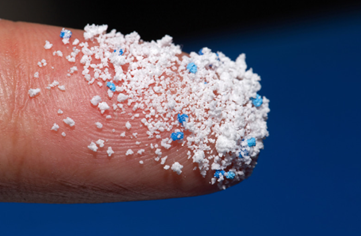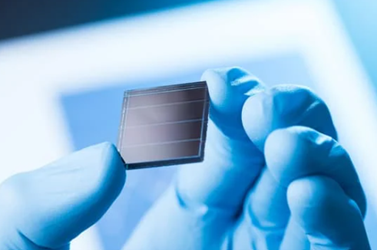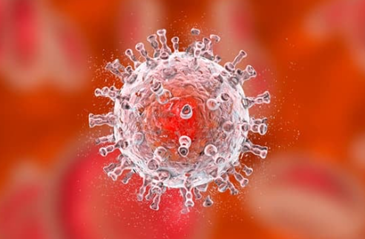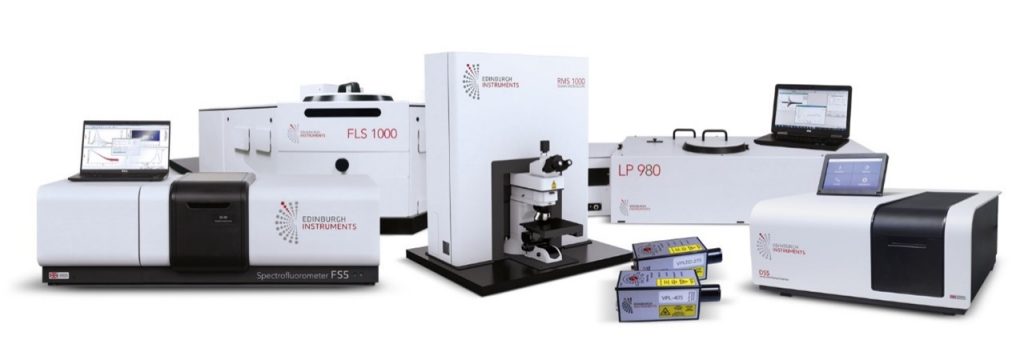Science Trends 2023 for Molecular Spectroscopy Applications
With the start of a new year, we take this opportunity to look forward at the science trends in 2023 in the field of molecular spectroscopy. In this article we explore the areas where molecular spectroscopy can be used to make advances and offer solutions that other techniques cannot provide.
Environmental challenges, energy crisis and advances in biomolecular analysis and molecular precision medicine are all hot topics as we continue to learn about the ever-changing environment and make medical advancements.
We will also look at trends in laboratory instruments and software that that play a critical role in research, and how Edinburgh Instruments can satisfy these expectations.
Environmental Challenges
Microplastics Research
Microplastics are now so widely spread that they have been found in even the most remote environments on Earth. Although we are increasingly aware of microplastics and the damage they do to our environment, we do not yet fully know what this means for our health.

One problem scientists have when carrying out microplastics research is that they are difficult to identify. Common analysis techniques are hindered by the size of the microplastics, or, when testing water samples, water interferes with the analysis.
Raman Microscopy offers solutions to these problems. The small size of microplastics is not an issue for Raman microscopy due to its high spatial resolution. Another advantage of using Raman spectroscopy is that water only gives weak Raman signals, interference is minimised and samples from oceans or rivers can be more accurately measured.
Find out how our RM5 Raman Microscope plays an essential part in the study of microplastics in our application note Identification of Microplastics using Raman Spectroscopy.
Alternative Energy Sources
A major contributor to climate change is the use of fossil fuels for energy. Burning natural gas and oil to provide heat and electricity emits large quantities of CO2 and other harmful gases into the environment, causing changes to the atmosphere. An alternative source of fuel, heating and electricity that does not have such a detrimental effect on our planet needs to be found.
Solar panels have been in use for several decades with recent advances showing them to have real potential as an alternative source of electricity. Perovskite solar cells have seen efficiencies increase from 9% to over 25%, making them extremely promising. Researchers continue to improve the efficiencies and scalability of perovskite solar cells to hopefully one day deliver a viable alternative to fossil fuels.

Photoluminescence spectroscopy is an ideal technique for investigating the efficiencies of perovskite solar cells as the photoluminescence signal is proportional to the number of charge carriers that radiatively recombine in the perovskite. The FS5 and FLS1000 Spectrometers can be utilised to carry out perovskite research, as demonstrated in our application notes:
- Photoluminescence Quantum Yield Halide Perovskites
- Perovskite Quantum Dots
- Halide Perovskite Carrier Lifetime
Biopharmaceuticals Trends in 2023
Analysis of Biomolecules
 Raman Spectroscopy also has excellent uses in diagnostics as it can detect changes in the blood. This is useful in detection of cancers, viruses, bacterial and fungal infections and some neurodegenerative disorders. Blood is also a good indicator of our own body’s health, circulating around our body providing nutrients, oxygen and removing waste.
Raman Spectroscopy also has excellent uses in diagnostics as it can detect changes in the blood. This is useful in detection of cancers, viruses, bacterial and fungal infections and some neurodegenerative disorders. Blood is also a good indicator of our own body’s health, circulating around our body providing nutrients, oxygen and removing waste.
Find out in this article why Raman spectroscopy is a key technique for the analysis of blood plasma or serum: Blood Analysis Using Raman Spectroscopy.
Being able to identify and investigate biological samples is not only of interest to the medical field, but also in crime investigation. Forensics labs can use Raman and fluorescence spectroscopy to investigate evidence by carrying out blood and biofluid analysis, ink analysis, fingerprint analysis and more. This application note, Confocal Raman and Photoluminescence Microscopy for Forensic Investigations is an essential read to discover how both Raman and photoluminescence techniques can be used as rapid, non-destructive techniques that are ideal for criminal investigations.
Diagnostics
A field of growing interest in the past few years is molecular precision medicine – the idea of creating treatments specific to each patient. This is of course a costly and time-consuming undertaking, but Surface Enhanced Resonance Raman Scattering (SERRS) measurements can easily monitor drugs or biomolecules. Our application note, Characterisation of SERRS Nanoparticles Using UV-Vis and Raman Spectroscopy, details the characterisation of Malachite Green (a substance often used for bio-tagging) using the RM5 Raman Microscope and DS5 Dual Beam UV-Vis Spectrometer.
Obtaining detailed images of tissue samples is vital for diagnostics. In this application note, Multiphoton Imaging of Mouse Intestine we highlight how the multimodal RMS1000 can be used to obtain images of intestinal tissue using multiple techniques, building up a greater picture of the tissue under investigation.
Luminescence optical probes have been gaining particular interest over the past few decades, as researchers exploit their versatile magnetic and photoluminescent properties. One example of these is lanthanide-based optical probes. There are several advantages to using lanthanides: they exhibit large Stokes shift avoiding reabsorption, have excellent spectral discrimination and are resistant to photobleaching. Find out more about the characteristics of lanthanide based optical probes and how they can be used as bioimaging tools in our application note: Photoluminescence of Lanthanide-based Optical Probes.
Software and Instrument Trends in 2023

In terms of laboratory instruments, the key trends in 2023 are data reliability, efficiency and automation, using technology to simplify or speed up processes normally carried out manually.
Instrument Features
The RMS1000 Confocal Microscope is a multimodal imaging instrument offering several configurations to maximise the techniques you can use to fully investigate your materials in one instrument. The imaging options available include: reflected brightfield & darkfield, Raman, photoluminescence and second harmonic generation. Our recent application note: Multimodal Raman, Photoluminescence and SHG Imaging of CVD Grown WSe2.
Fluoracle® Software Features
Edinburgh Instrument’s exclusive Fluoracle software features options that allow measurements of both steady state and time-resolved photoluminescence to be carried out accurately whilst saving users’ valuable time.
Our Fluoracle® software, available for FS5 Spectrofluorometer and FLS1000 Photoluminescence Spectrometer, includes “Batch Mode” which allows users to combine different types of measurements in a list and perform this list automatically. This Technical Note, Automation of Photoluminescence Measurements using Batch Mode Scripting explains this in greater detail.
Another Fluoracle feature intended to increase the speed of measurements is the SC-41 Plate Reader which allows automatic spectral and lifetime measurements of multi-well plates to be easily acquired, increasing measurement throughput and lab productivity. You can watch our short video about the SC-41 Plate Reader in our recent software highlight.
Ramacle® Software Features
Ramacle® software available on our RM5 and RMS1000 Raman Microscope also contains features to help maximise efficiency. The “Fast Mapping” significantly reduces the acquisition time of Raman maps by employing efficient stage movement, potentially saving you hours of time when acquiring Raman maps with no compromise on the quality of the map. More details of Fast Mapping can be found in this software highlight, Ramacle® Software Highlight: Fast Mapping.
Visacle® Software Features
Visacle®, available on our DS5 Dual Beam UV-Vis Spectrophotometer can be purchased as CFR Part 11 Compliant which includes additional security measures including configurable user profiles with secure login and e-signatures, an audit trail of activities and the option to implement a permission system that can restrict actions and data access to authorised users only. More information about Visacle® is available on our website.
Looking to the Future
2023 looks to be an exciting year for everyone involved in molecular spectroscopy. With lots of innovative research underway that utilises Raman and photoluminescence spectroscopy, we look forward to providing our own contributions with our state-of-the-art instrumentation. Our products are designed to meet the demands of modern research with quality and user experience at the heart of our instruments. The versatility of our instruments makes them ideal for research use to help tackle environmental challenges, such as microplastics research as well as medical research such as molecular precision medicine.
Keep in Touch
If you have enjoyed this article about Trends in 2023 for molecular spectroscopy applications, sign up to our newsletter and follow is on social media using the links below to be the first to hear about our latest product news and applications.









